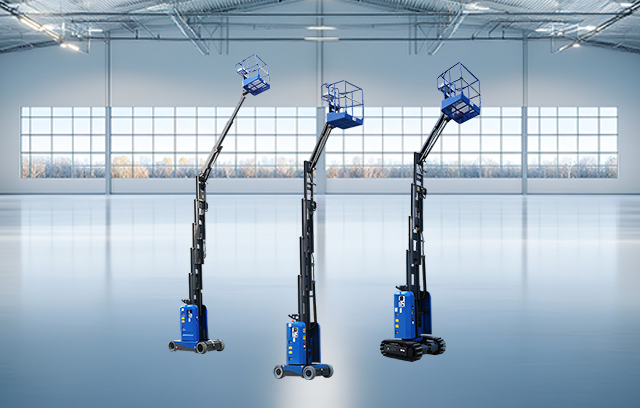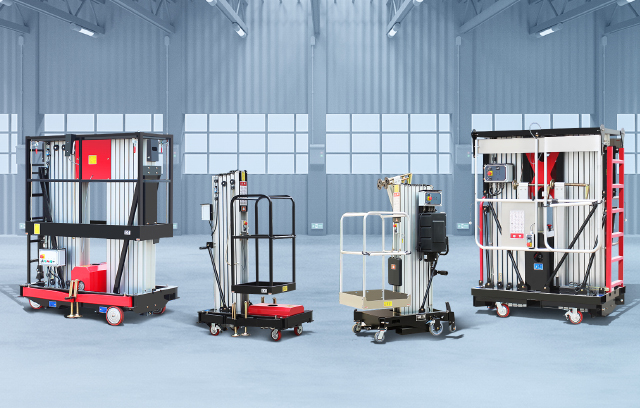The performance of the hydraulic system is directly related to the working efficiency of the forklift style vertical lift among which the change in the flow rate of hydraulic oil is an important factor in determining the lifting speed. As the power transmission medium of the lift, the flow rate of hydraulic oil directly affects the moving speed of the lifting platform. Each component in the hydraulic system, including hydraulic pipelines, hydraulic valves, hydraulic pumps, and motor speed control devices, will have a significant impact on the flow rate of hydraulic oil. For example, if the hydraulic pipeline is blocked, the flow of hydraulic oil will be hindered, resulting in a decrease in the lifting speed. Similarly, if the hydraulic valve (such as a one-way stop valve, solenoid reversing valve, proportional control valve, etc.) fails or is blocked, it will also limit the flow of hydraulic oil, further affecting the performance of the lift. In addition, if the performance of the hydraulic pump declines or its oil supply flow is unstable, it will also lead to a decrease in the lifting speed. Therefore, it is essential to regularly inspect and clean the hydraulic pipelines and hydraulic valves and ensure the stable operation of the hydraulic pump to maintain the normal speed of the lift.
The quality of hydraulic oil is also a key factor affecting the lifting speed. During use, the hydraulic oil may gradually deteriorate due to oxidation, contamination, etc., and produce impurities and sediments. These impurities will not only cause blockage of hydraulic lines and hydraulic valves, but also reduce the lubrication performance of hydraulic oil, increase friction between components, and further affect the lifting speed. Therefore, regular replacement of hydraulic oil and selection of high-quality hydraulic oil that meets the requirements of the equipment are important measures to ensure the normal operation of the lift.
The leakage problem of the hydraulic system should not be ignored either. If there is a leak in the system, it will lead to the loss of hydraulic oil, thereby reducing the system pressure and directly affecting the lifting speed. Leakage may occur in multiple locations such as hydraulic pipes and joints, cylinders, and joints of hydraulic valves. Once a leak is found, the cause must be immediately identified and repaired to prevent the problem from further expanding and affecting the overall performance of the equipment.
When dealing with abnormal lifting speed problems, adjusting the overflow valve is not an effective way to solve the problem. The main function of the overflow valve is to prevent the hydraulic system pressure from being too high to protect the safe operation of the system. Randomly adjusting the setting value of the overflow valve may not only cause abnormal system pressure, but also cause equipment damage or cause safety accidents. Therefore, when facing abnormal lifting speed, other possible causes should be eliminated first. Only when it is confirmed that the hydraulic system pressure is lower than the normal range can the overflow valve be considered for adjustment.










 Español
Español















